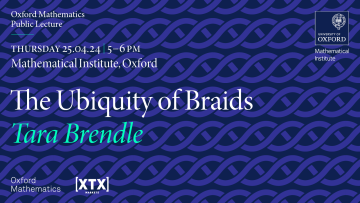Patterned illumination for complex spatio-temporal morphing of LCE sheets
Biography
John Biggins read natural sciences at Cambridge University. He specialized in experimental and theoretical physics, and was the top ranked student in his cohort. He then did a PhD in the theory of condensed matter group under the supervision of Prof Mark Warner FRS, working on the exotic elasticity of a new phase of soft matter known as a liquid crystal elastomer (LCE). During his PhD he made an extended visit to Caltech to work with Prof Kaushik Bhattacharya on analogies between LCEs and shape memory alloys.
After his PhD, John won an 1851 Royal Commission Fellowship and traveled to Harvard to work with Prof L. Mahadevan on instabilities in soft solids and biological tissues, including creasing, fingering and brain folding. He then returned to Cambridge, first as Walter Scott Research Fellow at Trinity Hall and then as an early career lecturer in the tcm group at the Cavendish Laboratory. During this time, he explained the viral youtube phenomena of the chain fountain, and explored how surface tension can sculpt soft solids, leading to a solid analogue of the Plateau–Rayleigh instability. He also taught first year oscillations, and a third year course "theoretical physics 1."
In 2017, John was appointed to an Assistant Professorship of applied mechanics in Cambridge Engineering Department, where he teaches mechanics and variational methods. In 2019 he won a UKRI Future Leaders Fellowship on "Liquid Crystal Elastomers, from new materials via new mechanics to new machines." This grant added an exciting experimental component to the group, and underpins our current focus on using LCEs as artificial muscles in soft mechanical devices.
Abstract
Liquid crystal elastomers are rubbery solids containing molecular LC rods that align along a common director. On heating, the alignment is disrupted, leading to a substantial (~50%) contraction along the director. In recent years, there has been a great deal of interest in fabrication LCE sheets with a bespoke alignment pattern. On heating, these patterns generate corresponding patterns of contraction that can morph a sheet into a bespoke curved surface such as a cone or face. Moreover, LCEs can also be activated by light, either photothermally or photochemically, leading to similarly large contractions. Stimulation by light also introduces an important new possibility: using spatio-temporal patterns of illumination to morph a single LCE sample into a range of different surfaces. Such stimulation can enable non-reciprocal actuation for viscous swimming or pumping, and control over the whole path taken by the sheet through shape-space rather than just the final destination. In this talk, I will start by with an experimental example of a spatio-temporal pattern of illumination being used to actuate an LCE peristaltic pump. I will then introduce a second set of experiments, in which a monodomain sheet morphs first into a cone, an anti-cone and then an array of cones upon exposure to different patterns of illumination. Finally, I will then discuss the general problem of how to choose a pattern of illumination to morph a director-patterned sheet into an arbitrary surface, first analytically for axisymmetric cases, then numerically for low symmetry cases. This last study exceeds our current experimental capacity, but highlights how, with full spatio-temporal control over the stimulation magnitude, one can choreograph an LCE sheet to undergo almost any pattern of morphing.


